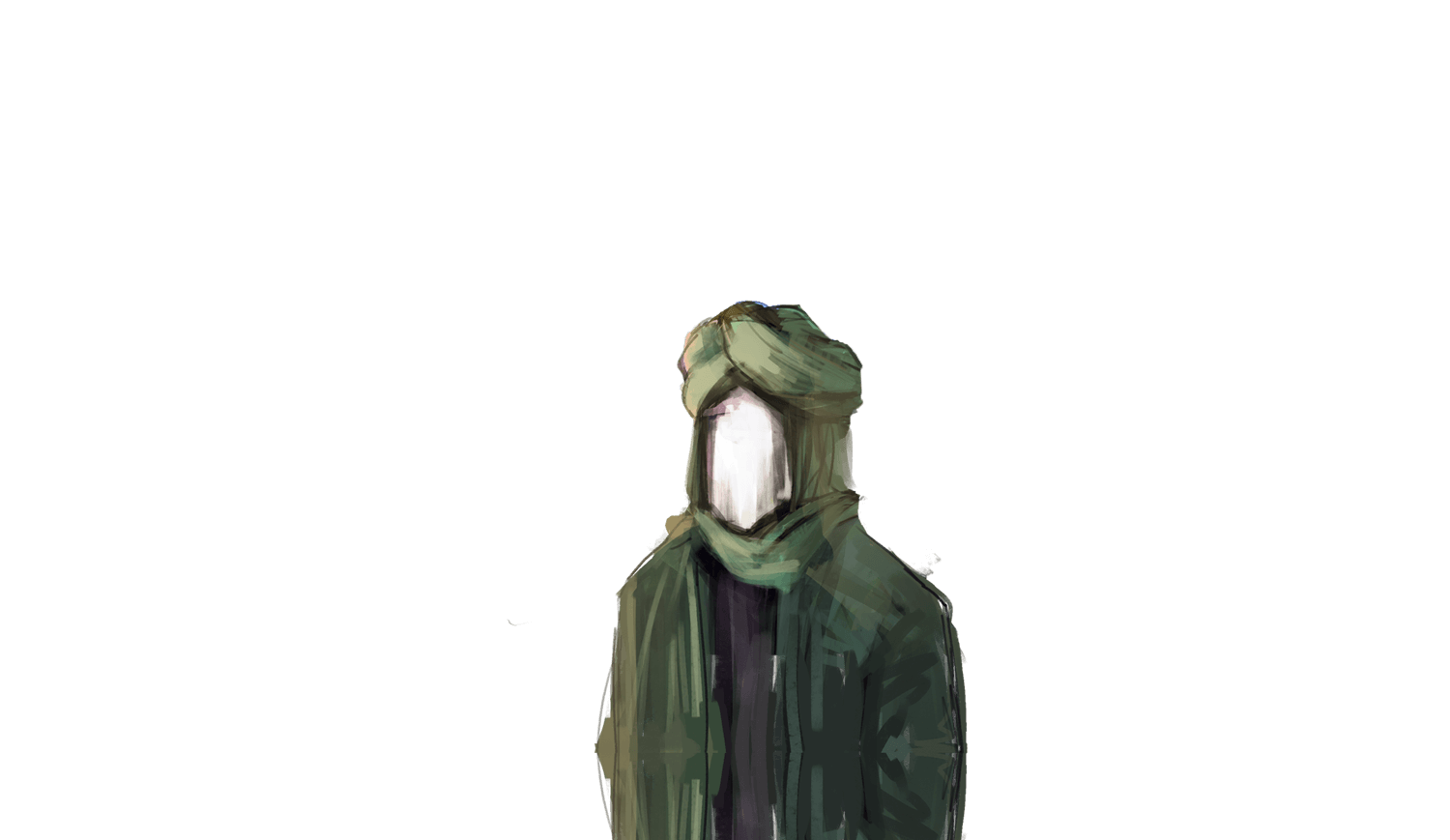The unique aspect of the Imamat of Imam Javad (AS) was its start at a very young age. Two centuries after the Prophet’s demise, and after the Imamat of eight holy Imams among the Shia community, it was now time for the Shias to fully realize the elevated status of their Imams. The acceptance of the Imamat of a seven-and-a-half-year-old boy, who was far younger than the Islamic pubertal age of fifteen, was a practical lesson for the Shias to recognize that the Imamat is a position determined by God. Once the Shias verified the Imamat of Imam Javad, they became proud and regarded his young age as proof of their theology and verification of the divine teachings they had received from the previous Imams. Thus, they did not later object to the Imamat of Imam Hadi and Imam Mahdi, who also became Imams at a very young age.
Imam Javad
The Imam of Generosity


Imam's Age
Birth
Imam Muhammad ibn Ali (AS), also known as Javad or Taqi, was born on the 15th of Ramazan in the year 195 Hijri in Medina. He was given the title of Abu-Ja’far by his father Imam Reza (AS), which was originally the title of Imam Baqir (AS). To distinguish him from Imam Baqir, he would also be called Abu-Ja’far al-Thani, or “The Second Abu-Ja’far”. He was the only child of Imam Reza.
Difficulties of Late Fatherhood
Imam Javad was born when his father Imam Reza was 46-years old, when 12 years had passed from the start of Imam Reza’s Imamat. During these 12 years, many doubted if Imam Reza was the true Imam of the time, as he did not have a son to inherit the Imamat. Among the skeptics were the Vaghefi Shias, who did not believe in the Imamat of Imam Reza, and were looking for any excuse to challenge his Imamat. Imam Reza was patient with the accusations against him. He would confidently respond with a prophecy that God will certainly bless him with a son who will inherit the Imamat after him.
Honorable Childhood
The Imam Javad’s birth brought great joy to Imam Reza and his family. This was not only because Imam Reza had become a father at an old age, but also because it verified his Imamat. The Shia community gained trust and confidence in their belief in the Imamat of Imam Reza, as he now had a son to become his successor. Imam Reza described Imam Javad as a newborn more auspicious and blessed for the Shias than any other newborns. The Imam would stand by Imam Javad’s cradle and speak to him in private for a long time. When Imam Reza was asked about their conversation, he responded that he was giving his son the benefits of his knowledge.
Travel to Merv
Before leaving Medina, Imam Reza held the hand of his beloved five-year old son, Imam Javad, and visited the tomb of the Holy Prophet. He sought the Prophet’s protection for his son. Imam Reza then asked his companions and representatives to obey Imam Javad, and revealed him as his successor to the Imamat.
Martyrdom of Imam Reza (AS)
During the last hours of Imam Reza’s life, his companion, Abasalt Heravi, saw a young boy inside the Imam’s residence. He asked the boy how he had entered the house, as he had closed all of the entrance doors because Imam Reza was sick and could not meet anyone. The boy responded that the Almighty, who had brought him from Medina to Tus in just a moment, had gotten him into the house through the closed door. Abasalt asked him who he was, and the boy responded that he was his Imam, Muhammad ibn Ali (Imam Javad). He said that he was there to meet and bid farewell to his lonely and poisoned father. When Imam Reza saw his seven-and-a-half-year-old son, he got up and hugged him. They talked in private for a while, until the Imam’s soul ascended to the heavens. Imam Javad then performed his father’s rituals alone. He washed and prayed over the Imam’s body, and then disappeared without anyone else noticing his presence.
Beginning of Imamat
In the beginning of Imam Javad’s Imamat, there was great confusion among the Shias about his eligibility for the Imamat. Undoubtedly, Imam Reza had only one child to inherit the Imamat from him. However, it was difficult for some Shias to accept the Imamat of a seven-and-a-half-year-old boy who was much younger than the Islamic pubertal age of 15. The confusion in recognizing the Imam of the time was not limited to ordinary Shia followers, but also included some Shia elders who doubted the Imamat of Imam Javad. The Shias, particularly about eighty of their elders and scholars, stopped by Medina during their travel to perform Hajj. During their stay in Medina, the Shias asked many questions from Imam Javad. The number of questions that they asked were estimated to be in the thousands. For many of the questions, the Imam provided short answers or responded in advance, even before the question had completed. This in itself was a miracle and validated the fact that the Imam held the knowledge of the unseen. Once the Shias verified Imam Javad’s divine knowledge, they began to have faith in his Imamat. They did not have any doubt that the Imam’s knowledge was given to him directly by God, and the Imam could not have obtained his knowledge through education due to his very young age.
Ma’mun’s Plot for Imam Javad (AS)
After the martyrdom of Imam Reza, Ma’mun and his troops returned to the Abbasid capital of Baghdad and were able to bring the city under their control. Although Ma’mun had concealed his direct role in Imam Reza’s poisoning and martyrdom, he was held responsible by the public as soon as the Imam was poisoned. Thus, he decided to find a peaceful solution for this problem. He wanted to portray to the public that he still held as good a relationship with the Alavids as before.
Thus, about a year after the martyrdom of Imam Reza, Ma’mun decided to pursue his initial plan of marrying his daughter, Um-Fazl, to Imam Javad. He had promised Um-Fazl to Imam Javad around two years earlier in Merv during Imam Javad’s absence. By this time, the Shias had verified Imam Javad’s divine knowledge and had accepted his Imamat. Thus, Ma’mun knew that Imam Javad had the same status in the eyes of the Shias as his father, Imam Reza. This political marriage was a peaceful sign to portray to the people that the two families, the Alavids and the Abbasids, were united and had strong ties. Ma’mun had thought that this marriage could have multiple other benefits for him as well. He could closely monitor the Imam’s activities, especially his communications with the Shia leaders and representatives. Also, the young Imam would be affiliated with the Abbasid royal family, and he would be prone to sinful behavior that they would indulge in. In such a situation, the Imam’s holy character would be damaged in the eyes of the Muslims, particularly his Shia followers.
The Imam in Baghdad
To Implement his decision, Ma’mun sent a letter to Imam Javad in Medina and invited him to Baghdad. Prior to his meeting with Ma’mun, the Imam coincidently encountered Ma’mun in the streets of Baghdad while Ma’mun was going hunting with his troops. The people in the streets ran in fear of Ma’mun’s troops. However, Imam Javad, as young as he was, remained in the street unafraid of Ma’mun’s troops. The Imam’s calmness attracted Ma’mun’s attention. He approached the Imam and asked him why he did not run away like the others. The Imam responded: “O’ Caliph, the road is not narrow which would require me to open it up for you. I have also not committed any guilt or mistake to run away from you; and I don’t think that you would prosecute anyone without a guilt.” Ma’mun was shocked by the Imam’s confidence and wise response, and asked for his name. The Imam introduced himself and this was the first time that Ma’mun met the Imam.
The Imam’s Islamic Marriage
The Abbasid royal family became worried when they heard about Ma’mun’s decision to marry his daughter to Imam Javad. They feared that Ma’mun would eventually choose Imam Javad as his Crown Prince, similar to how he chose Imam Javad’s father, Imam Reza, in the past. They did not want to lose their power and influence in the future government. They came to Ma’mun to object and tried to convince him to revert his decision. In their discussion, they told Ma’mun that Imam Javad was still a child and lacked knowledge and maturity for marriage. They asked Ma’mun to wait at least until Imam Javad grew up and learned Islamic teachings. Ma’mun thus allowed the Abbasids to set up a scientific debate to test Imam Javad’s knowledge and verify his claim.
The Abbasid royal family accepted Ma’mun’s challenge. They asked Yahya ibn Aktham, the chief justice of Baghdad, to debate with Imam Javad. They promised him a great reward if he could overcome Imam Javad in the debate. Ma’mun held a grand event where the people, the top scholars, and officials attended. In this event, Yahya asked for Ma’mun’s permission to begin the debate. He then asked the Imam about the Islamic ruling for someone who has hunted while he is in the state of Ihram or in Hajj garment. The Imam responded by asking him to specify the conditions under which the hunting had taken place, as this influenced the ruling. The Imam mentioned 11 different conditions that would influence the ruling. Yahya became greatly shocked by the young Imam’s response and could not continue debating with the Imam, as he did not know that this single question could have various answers depending on the relevant conditions. Furthermore, the Imam’s response demonstrated his full knowledge about all aspects of the Islamic law regarding this question.
Ma’mun, who witnessed Yahya’s inability to continue debating with the Imam, told the Abbasids that they have now realized what he had told them before about the Imam’s knowledge. He then told the Imam that he had selected him as his son-in-law, and asked the Imam to recite the Islamic marriage contract. The Imam accepted this political marriage, as it was enforced by the Muslim Caliph, and his refusal could have negative consequences for himself and the Shia community.
After a short stay in Baghdad and his marriage to Um-Fazl, the Imam returned to Medina alone. Imam Javad and Um-Fazl were both too young to live with each other, and their marriage was only limited to recitation of the Islamic marriage contract.
The Imam’s Scientific Contribution
The Imam was the true source of divine knowledge in Islamic society. He was referred to by many to answer questions regarding various aspects of Islamic sciences. The names of 193 individuals who had narrated Hadith from the Imam are still available. The Imam had also trained multiple notable scholars. These scholars had a special role in preserving and spreading the Imam’s narrations. They were not only scholars in the Islamic knowledge, but were also unique in piety and character.
The Imam’s Wedding Ceremony
Although Imam Javad was the son-in-law of the Caliph, he was completely indifferent to this material world. After reciting the marriage contract to Um-Fazl, the Imam did not stay long in Baghdad, and returned to Medina alone. He continued his role in Medina as the divine Shia leader. While in Medina, before his official wedding ceremony to Um-Fazl in Iraq, the Imam married a slave girl named Samaneh. The Imam’s marriage to a slave was a practical lesson in the equality of the people in the eyes of the Imam, as he regarded the Caliph’s daughter and a slave with equal esteem. It was also a clear message that his marriage to Um-Fazl was in fact a political marriage due to the circumstances that the Imam was living in.
After around 11 years from the time of the marriage contract to Um-Fazl, the Imam was brought to Baghdad for his official wedding ceremony. At this time, Imam Javad’s oldest son, Imam Hadi, had been born to his wife Samaneh in Medina, and was two years old.
After the wedding, the Imam stayed in Baghdad for several months until the upcoming Hajj season. He then left Baghdad with Um-Fazl towards Mecca to perform Hajj. After performing Hajj, they returned to Medina and stayed there for the rest of Ma’mun’s government for about two-and-a-half years.
Summon to Baghdad
Once Mu’tasim assumed power, he was worried about the chaos and unrest threatening his new government. He was also concerned about the popularity and social status of Imam Javad. The Imam was the divine leader of the growing Shia community, which refused to accept the legitimacy of the Abbasid government. He decided to closely monitor and control every aspect of the Imam’s life and isolate him from his followers. Thus, he ordered his governor in Medina to send the Imam to Baghdad. As a result, the Imam left Medina with his wife, Um-Fazl, towards Baghdad. Mu’tasim pretended to be respectful to the Imam during his stay in Baghdad. However, he was carefully monitoring the Imam’s life. After around ten months from the Imam’s arrival in Baghdad, an incident triggered Mu’tasim to expedite his plot against the Imam, and martyred him.
A thief was brought to Mu’tasim’s presence and confessed to his theft. Mu’tasim decided to implement Islamic law and cut off one of his hands. However, he did not know how much of his hand he should order to be cut off, as a long time had passed since the last time this law had been applied to thieves. He then prepared an official meeting and invited Islamic scholars, including Imam Javad, to his presence and asked for their opinion. In this meeting, Ahmad ibn Abi Du’ad, who was the chief justice of Baghdad, determined the cutting limit to be at the wrist by referring to the Quranic verse that describes performing tayammum (or sand ablution) on hands. This opinion was supported by some of the scholars. However, some other scholars determined the cutting limit to be at the elbow by referring to the Quranic verse about performing ablution where the hands are washed at the elbows. Mu’tasim then turned to the Imam and asked for his opinion. The Imam, who was fully aware of the threats and conspiracies against himself, refused to answer and told Mu’tasim that the other opinions were enough for him. However, Mu’tasim swore that he will not let the Imam go unless he got his opinion. When the Imam was forced to express his opinion, he told Mu’tasim that all of the provided answers were wrong. The Imam then determined the cutting limit to be at the fingers and emphasized that the palm of the hand should not be cut. Mu’tasim asked for the reasoning on this ruling. The Imam responded that the Prophet had determined seven body parts, including both palms, which must be placed on the earth during prostration to God. The Imam then said that these seven body parts belong to God, and if the thief’s hand was cut from the wrist or the elbow, he would not be able to properly prostrate to God. To strengthen his point, the Imam provided Quranic evidence for his claim as the other scholars had done. He referred to the following verse of the Quran [72:18]: “And the places of prostrations are for God, so do not invoke anyone along with God.” The word ‘masjid’ in Arabic, which is commonly translated to mosque in English, in its essence means the place of prostration. Mu’tasim liked the Imam’s opinion and ordered the thief’s fingers to be cut according to the Imam’s opinion. This meeting finished and Ahmad ibn Abi Du’ad was ashamed of his defeat in front of the young Imam. He later said he wished he had died before attending this meeting.
After three days, Ahmad ibn Abi Du’ad came to Mu’tasim and advised him that his action of accepting the Imam’s opinion over that of other scholars was not a wise decision for his government. He told Mu’tasim that the Imam’s followers see the Imam deserving of the Caliphate and regard Mu’tasim as the one who has occupied his position. He said that the news of this official meeting has already spread in society and was strong evidence for the Imam’s followers for their belief in him. This conversation triggered Mu’tasim to expedite his plot to martyr the Imam. Shortly after this incident, the Imam was poisoned and martyred.
Martyrdom
To implement his plot, Mu’tasim ordered one of his trusted ministers to invite the Imam to his house and offer him a poisonous meal. The Imam initially rejected this invitation, however, the minister insisted and said that he wanted the Imam to bless his house with his presence. He also told the Imam that another minister wanted to meet the Imam during this event. Due to the excessive insistence, the Imam accepted his invitation. After eating a small portion of the meal, the Imam found himself poisoned and suddenly left the minister’s house. When the minister insisted the Imam stay longer, the Imam responded that it would be better for the minister if the Imam left his house immediately. Due to the hidden nature of the plot for the Imam’s martyrdom, his wife, Um-Fazl, was also regarded as a suspect. She had a good motive since she did not have any children from Imam Javad, and was jealous of the Imam’s other wife, who was the mother of his children. Also, she was from the Abbasid royal family and could have been tempted by her uncle Mu’tasim.
The Imam was martyred within a day of his poisoning, which shows the potency of the poison. He was martyred on the last day of Zu al-Qa’dah, in the year 220 Hijri, in Baghdad. He was martyred around ten months after his arrival in Baghdad by Mu’tasim’s order. Imam Javad was martyred at the age of only 25. He was the youngest Shia Imam at the time of martyrdom. Historical records suggest Imam Hadi’s miraculous travel from Medina to Baghdad to take care of his father’s rituals. He then secretly returned to Medina.
A large burial was held for the Imam, as he was affiliated with the Abbasid royal family. Additionally, Mu’tasim wanted to portray to the people, particularly the Shias, that he was innocent in the Imam’s death. A huge crowd of the Muslims attended the Imam’s burial. Wathiq, Mu’tasim’s son, officially led the prayer over the Imam’s body. The crowd carried the Imam’s corpse towards one of the city’s graveyards that belonged to the tribe of Quraysh, and respectfully buried the Imam next to the tomb of his grandfather, Imam Kazim (AS).





